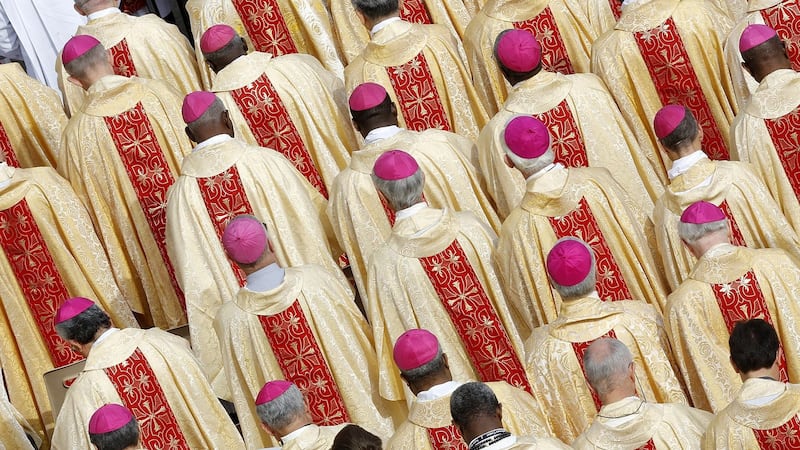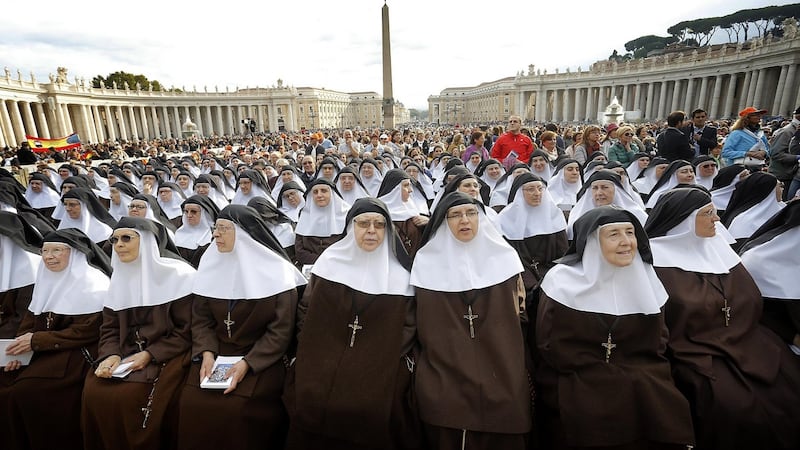Pope Francis has canonised the Catholic Church's first married couple in modern times, declaring the parents of the beloved St Therese of Lisieux saints in their own right.
Francis told followers gathered in St Peter’s Square in the Vatican that the couple, Louis and Zelie Martin, “practised Christian service in the family, creating day by day an environment of faith and love which nurtured the vocations of their daughters”.
Francis is particularly devoted to the 19th century French Carmelite nun, fondly known as “The Little Flower,” who died at the age of 24 in 1897 and was later honoured with the title doctor of the church.


Francis has had a copy of Therese's Story Of A Soul on his bookshelf since his days as a novice. As archbishop of Buenos Aires, he had her image on his desk. And he has said that whenever he has a problem, he directs his prayers to Santa Teresita, as she is known in Spanish, and often a white rose appears to him as a sign that she has heard his prayers.
Her parents were canonised at the start of the final week of his big bishops’ meeting on families. His aim is to provide Catholic families with saintly role models who took particular care to educate their children in the faith. The Martins bore nine children, only five of whom survived. All five became nuns, including the youngest, Therese, at the age of 15.
“It’s the first time a couple have been canonised as a couple, and this is a beautiful sign for Christian families, who often are left without any support and have to go against the grain, especially in the West, to live and educate their children in the truth of creation and with that love that God has given us in Christ,” said the Rev Romano Gambalunga, the postulator who followed the saint-making case through.
It is not insignificant that both miracles required for the canonisation concerned the inexplicable cures of newborns born with what doctors determined to be life-ending ailments.
When the Martins were beatified in 2008, the “miracle” concerned Pietro Shiliro, born in the Italian city Monza in 2002 with a congenital lung deformation that doctors said he could not survive. The priest who was called to baptise him encouraged his parents to pray to the Martins’ intercession. After a month in the ICU, during which he came close to death, he was released and is now a healthy teenager.
The second miracle needed for the Martins’ canonisation concerned a girl named Carmen, born at 28 weeks on October 15th, 2008 in Valencia, Spain after a difficult pregnancy. Two days later, she suffered a cerebral haemorrhage that caused near-fatal blood poisoning.
Her parents went to the Carmelite nuns seeking guidance, and they suggested they pray to the intercession of the Martins, who had just been beatified on October 17th, 2008 in Lisieux. After three months in hospital, Carmen was released, cured, on January 2nd, 2009 - the 135th anniversary of the birth of the Martins’ youngest daughter, Therese.
Pietro and Carmen were both present at the ceremony in the Vatican.
Francis also canonised Vincenzo Grossi, a priest who died in 1917 and spent most of his life helping the poor in northern Italy, and María Isabel Salvat Romero, a 20th century Spanish nun.







